Your daily dose of Product Management Goodness
Want to know more?
We would love to hear your questions and suggestions for topics you would like to see covered in our future blog posts, so don't be shy and get in touch!


5 tips for delivering bad news
There are times in every Product Managers career where we have to deliver bad news – a late product, a missing feature, a metric not achieved. It’s never easy, but here are my tips for delivering bad news:
Never delay - Bad news doesn’t get better with time.
Have clear reasons - You need to explain why. Be specific
Bring options and solutions - You need to show an action plan that solves or at the very least mitigates the problem as much as possible.
Write it down - Conversations can get misinterpreted.
Follow through - Track actions and keep everyone informed
read more

Measure with your Product
Knowing where you’ve come from is interesting, knowing where you’re going is critical.
Most Product Management teams I work with have some form of metric set in place – they recognise the importance of tracking product success. But I’d estimate in 80% of cases those metrics are ones that look backwards. They tell you what HAS happened and give no clue as to what might happen next – they measure things like profit, usage & revenue. This is akin to a satnav giving you numerous stats on your journey so far, but not mentioning the road ahead is closed.
We know it’s impossible to predict the future, but decent metrics give the opportunity to at least estimate it - tracking metrics on regulation, competitive landscape, tech trends, customer satisfaction & forecast financials make it a little less likely that your product hits a roadblock.
So what do you measure with your product?
read more

What's in a name?
I always tell product managers that a good start is to make the name descriptive - it helps customers to understand your offer quickly. In the UK, think of WeBuyAnyCar.com - if you've never heard of them I'm betting you can guess roughly what they do by their name.
But walking through London last week it struck me that the name also had to be realistic. Take a look at this café I walked past- it certainly looks like it's seen plenty of battles, perhaps not so many victories. As names go, it's sailed past 'ambitious' and landed firmly in 'delusional'. Any examples of really good or really bad product or business names? A prize awaits the winner - an all-you-can-eat breakfast at the Victory Café!
read more
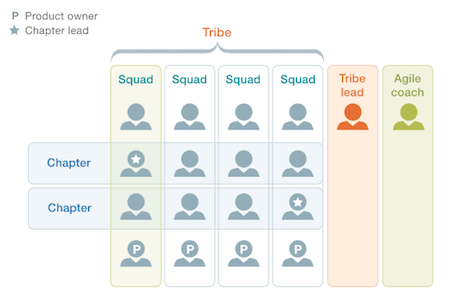
Tribes, Squads, Prod Mgnt
Tribes and squads and product management
We’re all aware that waterfall is last century and agile is the way to go. But many of us are also aware that our whilst our business proclaims to be agile, it really isn’t - using scrum et al to deliver product does not make a business agile. Often we see a waterfall business and an agile dev team working to a horribly compromised Wagile model. A way through this? Take a look at Spotify with its squads and tribes model. Essentially the organisation completely embraces agile and has small, empowered, intact teams that don’t just think about the tech product, but the complete customer solution.
read more
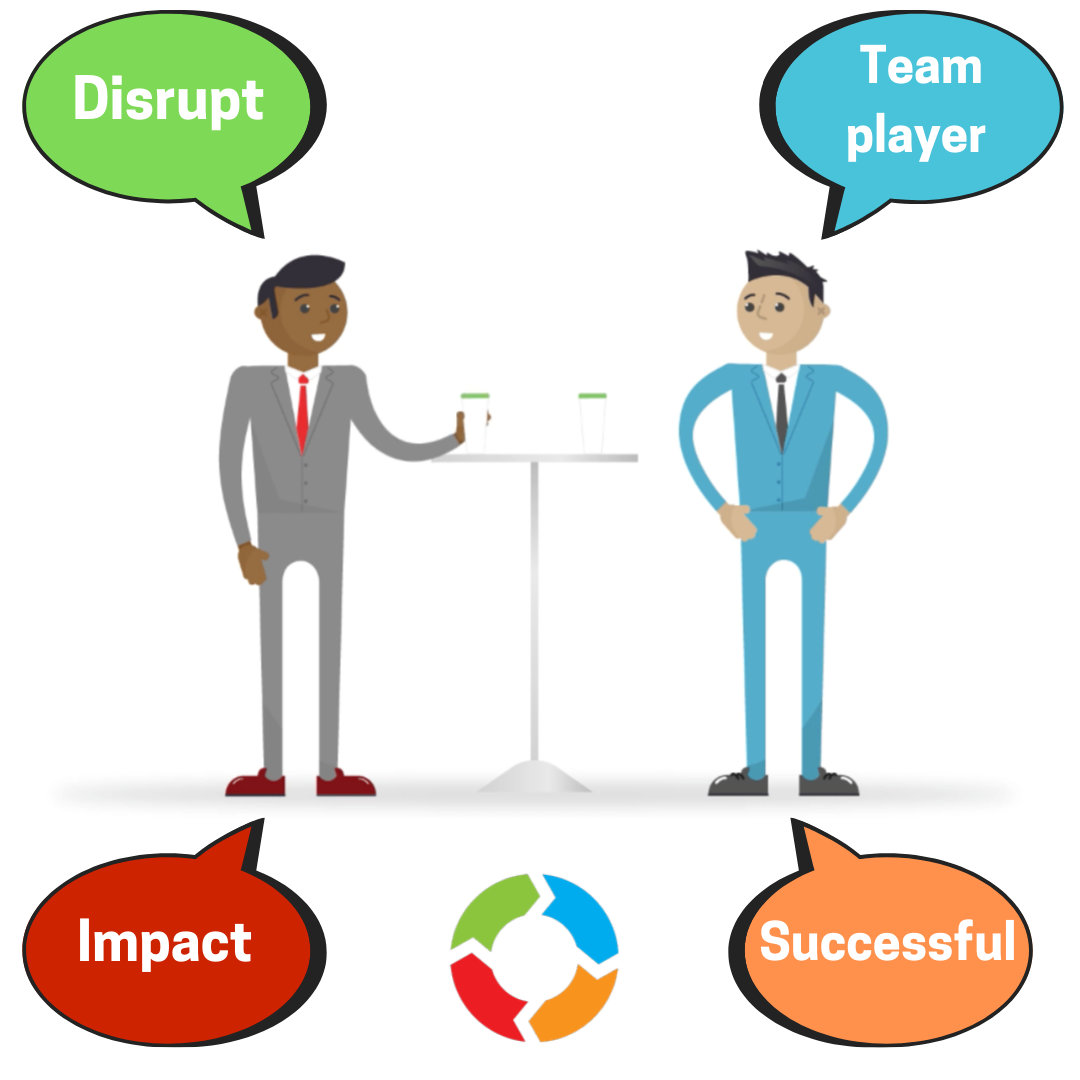
Prepare to Interview
Recruiting and employment is a minefield of matching skill sets and personalities, finding the right people to fit into your current team or disruptive individuals that promote change.
It is difficult to find the right balance.
Finding the right fit is hard to do from looking at CV’s, and interviews don’t help to much either… ‘On my best behaviour with my best foot forward’.
You can get a sense of their skills from the CV, but this isn’t going to be a fully accurate representation of what they can provide. Really, an interview needs to realise candidates’ attitudes and personality traits in order to identify if they are going to fit into the role or gap that you are trying to fill.
In order to do so you should understand a few things about what you would like the net result of their employment to look like:
? Should they disrupt and become the catalyst for change?
? Should they be a team player that helps spreads workload?
? What is key to being successful in this role?
? How will the role impact the company over the next 12/24/36 months?
read more
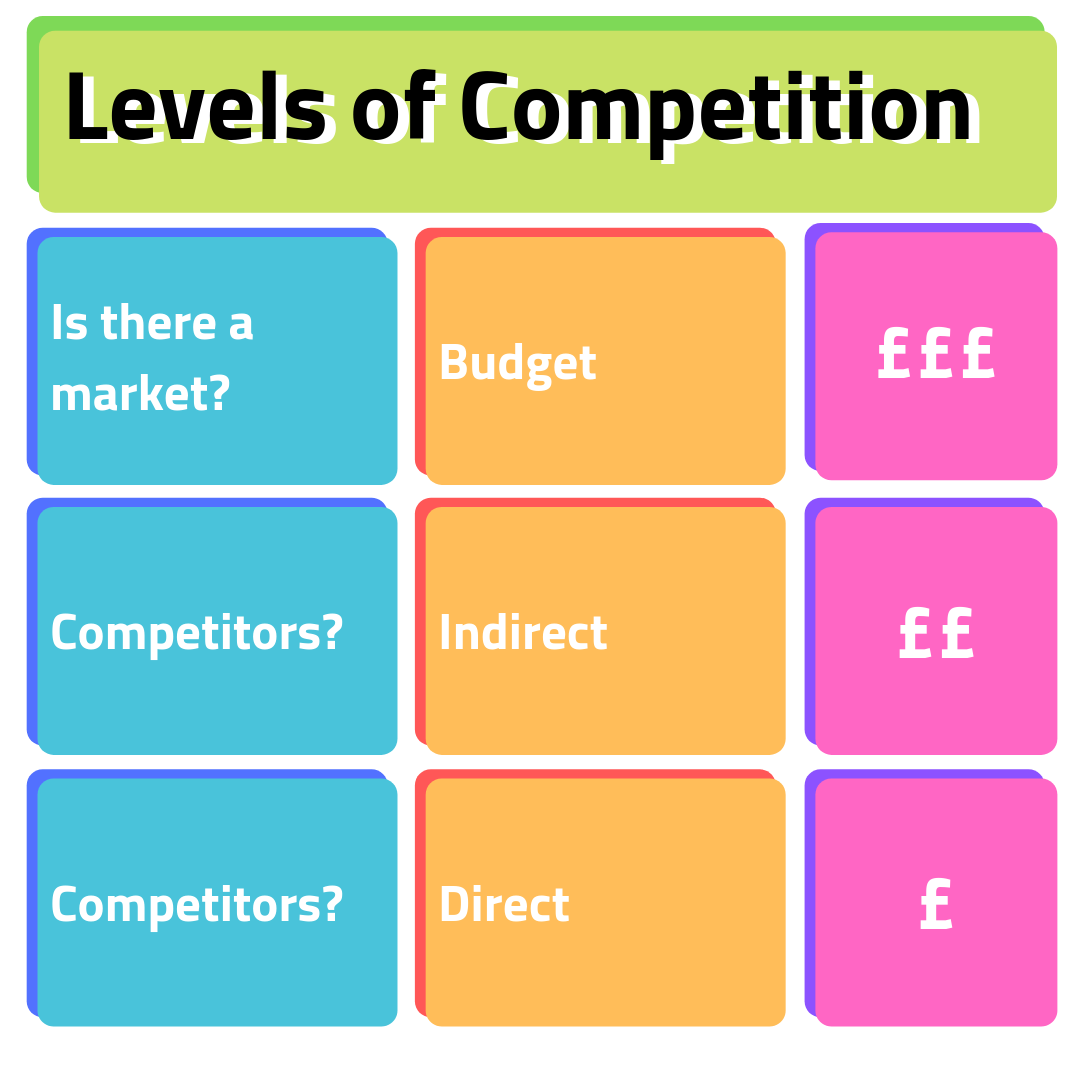
levels of competition.
I was talking to a team who describe their product as having “no competition”. Great news? Perhaps, but think about it like this.
We should think about levels of competition.
1. We might face products similar to ours from competitors that look a lot like us. These are direct competitive threats - think Audi vs BMW vs Mercedes.
2. Sometimes the competition is less obvious. Its other ways that our customers can solve the problem that we help them solve. These are indirect competitive threats – think car vs plane vs video conferencing
3. Occasionally we see our product having no competition. This sounds great, but we should be cautious. No competition might mean you’re first to market, but it might also mean that there really no market. Even being first to market isn’t without risk. History is littered with examples of products and businesses that got there first, but didn’t thrive – think Palm in the PDA market, the Beta max format in the video market or Atari in the games console market. All three were first to market. All three failed to capitalise on first mover advantage.
read more
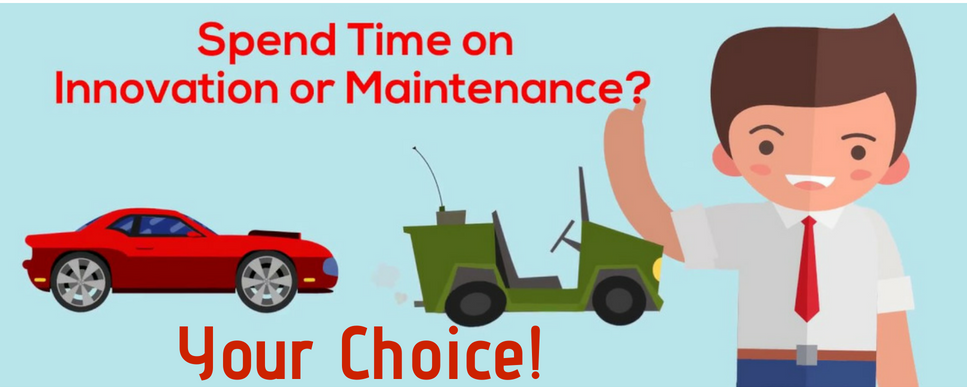
Innovation vs Maintenance
Maintenance vs innovation
How do product managers balance the needs of their current product versus investing in new ideas? We’re working with a company where about 80% of development effort is directed towards product maintenance, some towards enhancements and the little bit that’s left goes to innovation. The result? A very frustrated senior management team who see a huge spend and nothing new to sell. There can be many reasons behind this (badly architected product, fixed sized dev teams, etc) but it clearly cant be sustained. Our fix? Set a target maintenance spend (say 20%) and a target date to hit that spend (say 3 years) and then ratchet spend down each quarter. This gives teams the time to address the fundamentals, get a plan in place and move towards a more appropriate spending level.
read more

Engaging with the audience
Communication is a vital skill for a product manager. It might be a 5 minute elevator pitch or a full technical review. Either way you need to keep your audience engaged and interested in what you saying. Here are a few tips :
1. Tell the audience why they are there
2. Pick three major points you want to talk about and focus on those.
3. Don't overload your presentation with text and pictures.
4. Keep an eye on time. Use a parking lot to collect points that can be answered later.
5. Don't just deliver dry facts.
6. Deliver with passion.
7. Banish your nerves.
read more
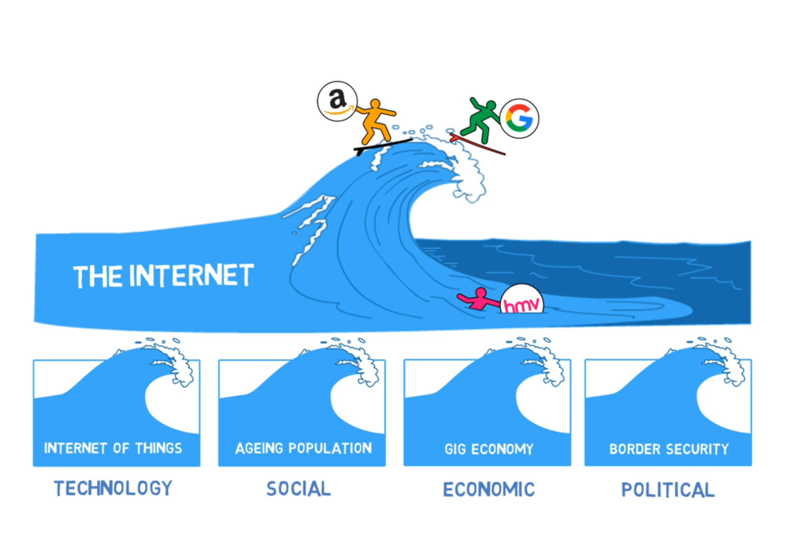
Mega Trends
Mega trends are substantial changes that can impact any aspect of our business. Once upon a time the internet was a potential mega trend, out on the horizon, gathering strength. Some businesses saw it, built or modified their products to accommodate it, and rode the internet wave. Others weren’t so visionary and floundered as the world moved online.
How do we identify mega trends? product managers must constantly look for trends in four broad categories:
· Technology – today we see trends such as A.I or the Internet of Things gathering momentum.
· Social – think of trends such as the ageing population or urbanization
· Economic – the gig economy and peer-to-peer networks are relevant examples
· Political – trends could be border security or environmental controls.
Once we’ve identified the trends, we need to think of what they mean to our business. For example, IoT presents risk and opportunity around cybersecurity. There will be an estimated 26 billion connected devices by 2020 – some sharing sensitive data and payment information. Hacking into that network could cause widespread disruption.
So what mega trends present opportunity or risk to your product? Product Managers should be thinking about this regularly.
read more

Themed Roadmap
A themed roadmap is the perfect framework to manage your product along strategic lines. It enables long term objectives & product deliverables to be realised but can flex to meet shorter term demands or agreed variations on the importance of each product strategy.
Moreover, a Themed Roadmap is a single "view" of product strategies and deliverables that can be used in all discussion with major stakeholders as you seek to gain alignment and agreement on a complex set of future product deliverables.
read more

Losing a deal
How do you react to losing a deal?
I’ll admit that I react badly, but how should a Product Manager really react? After a couple of months of not putting a wrong (we’ve just recorded our best month and will record our best quarter – go team!) we missed a deal. We’ll deal with this using GRIT.
Grieve – In my opinion good losers tend to be infrequent winners so don’t feel bad about feeling bad. Go for a run, beat a punch bag, relax in a hot bath. Whatever your way of dealing with it, give yourself a bit of time to get it out of your system.
Research - Gather as much data as you can. Gather from all sources and gather without filter or preconception.
Identify - Work out what went wrong. It’s easy to make price or product assumptions, but discount nothing. I recall a deal lost years ago where we worked out that the customer had not even read our proposal. Be aware that the answer might be that the deal was never in your sights.
Translate - Make changes so that you don’t repeat the same mistakes. Remember the lesson of marginal gain - small changes can deliver significant results.
So I need to go and give my punch bag 30 minutes of hell.
read more

What does a PM do?
What does a product manager do?
Our role can be quite complex and difficult to describe. But if we don’t have a clear purpose then we run the risk of being misplaced in our business (step forward all those product managers who are really sales support or project managers, ....).
Here’s a definition that might help. “Product managers reduce the risk of launching a product flop and increase the success of products in market”. So what does that mean? Well, product failure occurs in every sector. By using a professional pm framework a product manager reduces the risk of a potential product flop getting to market (we assess before we launch) and then by using the same pm framework, they ensure that existing products remain successful for longer (we continuously improve products). If there’s a 25% product failure rate in your industry and your pm skills have reduced that to 5% in your business then that’s great product management.
read more

Dealing with obstacles
Navigating obstacles is a daily part of Product Management – dealing with product issues, pressures from other teams, workload, worrying about product performance…..
Some Product Managers become so overwhelmed that they can’t see anything but obstacles. Their performance suffers, their product suffers, they suffer! Here’s a tip from the world of cycling; instead of looking at the obstacles, look beyond them at where you want to go. Look through the trees and around the rocks. By focusing on where you want to go instead of what you want to miss, the obstacles shrink and that good path becomes clear.
read more
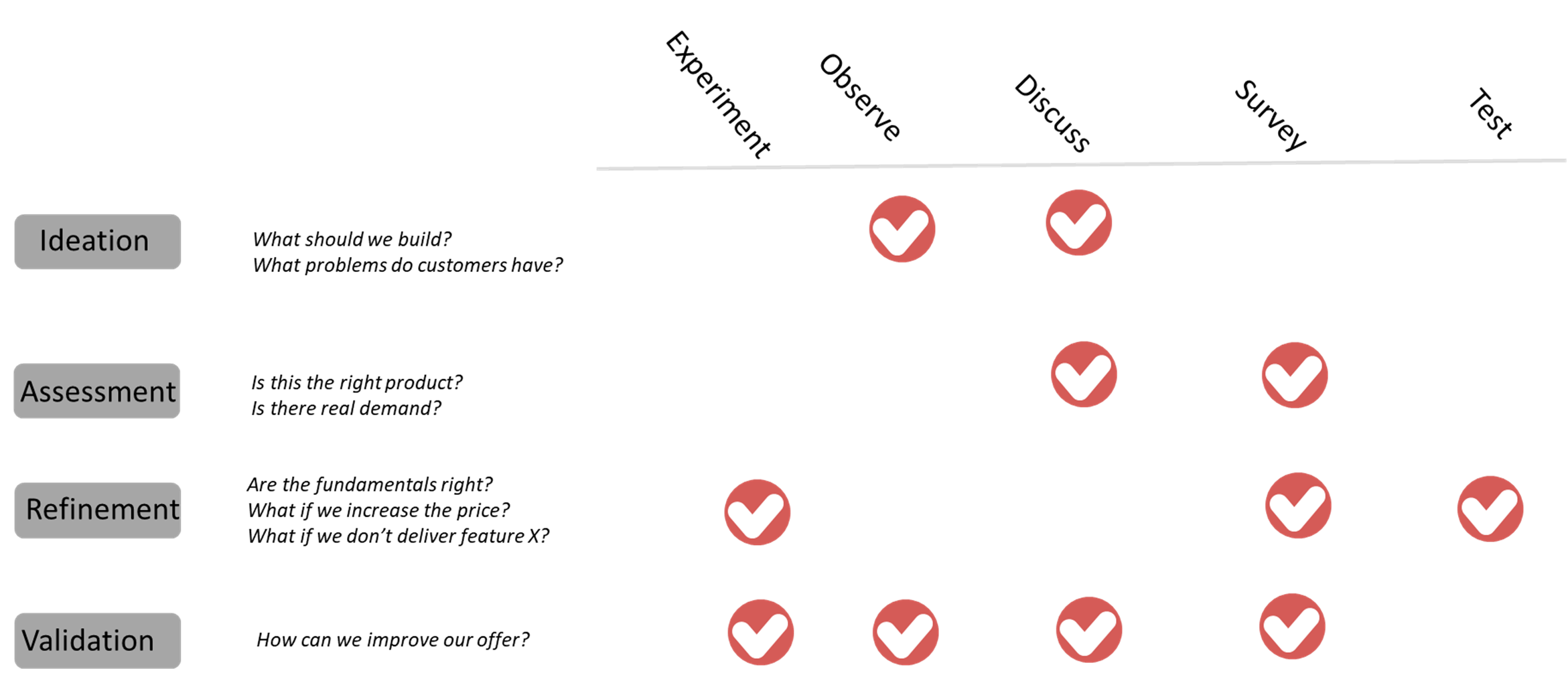
Market research
What does a great market research session look like?
I was reminded of this with a team I’m working with. They’re in a B2B market and are conducting early stage research on a new concept. A couple of product managers reported back that their customer visit had gone well. A deeper dive and it was clear that what they really meant was that the customer hadn’t asked any tough questions and so the meeting had been a breeze. This is bad news for the product; interested customers always ask difficult questions (date, price, detail). Think of these as buying signals – if they don’t ask “how much” or “when” they’re really not that interested.
read more
Check out the Archive